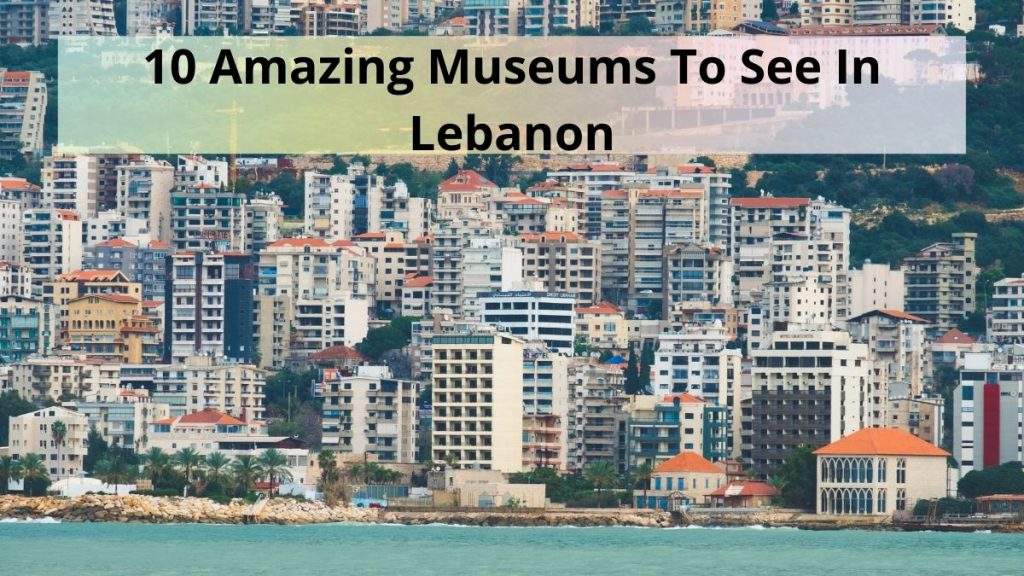Lebanon is as prosperous as it’s historical. Having been the website for many cultures — from the Phoenicians to the Romans and Ottomans –, it’s not surprising that ancient temples keep getting excavated from the nation. Lebanon’s history of warfare is likewise the origin of Lebanese identities, and also has inspired artwork. Discover more about Lebanese culture and history in these top 10 museums.

1. National Museum of Beirut
Launched as a theory in 1919, the National Museum of Beirut stands tall as a monument in its own right. The actual construction of the institution happened in 1930. Until then, the artefacts have been put in a different building in Beirut. From 1942 the memorial had opened its doors, but in 1975 it had been ruined from the civil war. The construction was nearly destroyed because it had been utilized as a militia foundation. Its artefacts needed to be stored in storage for 15 decades. Restoration began in 1995, and in 1999 the memorial once more opened.
2. Sursock Museum
First opened in 1961, Sursock Museum is a converted mansion devoted to showcasing modern art. The memorial became possible through artwork collector and aristocrat Nicolas Sursock’s love for art, along with his perspective that artists had the backing an institution can offer. In 2008 the construction saw the grand renovation and now remains the place to be for art fans.
3. MIM Mineral Museum
Situated in the University of Saint Joseph, the MIM Mineral Museum is your location for all science enthusiasts. Home to over 300 kinds of minerals, it’s regarded as one of the world’s most significant collections of its type. A display with invaluable information regarding mineralogy is a beneficial tool for enthusiastic novices.
4. Robert Mouawad Private Museum
Another home-turned-museum, the Robert Mouawad Museum, includes a European outside look. It houses a rich Arabic-style collection, motivated by proprietor Pharaoh’s fascination with Arabic inside layouts, motivated on his excursions to Syria. The home became a”lived-in” museum; then, the institution became what it is now. The items on the screen, when first purchased, weren’t supposed to be placed in a museum, so there’s no actual sequence to the way the historical pieces are organized through the room. Visit american airlines reservations to get cheap flight fares and vacation packages for Lebanon.
5. Sidon Soap Museum
Situated at a 13th-century building, the Sidon Soap Museum itself dates back to the 17th century. It was a soap factory, also reflecting a significant part of Lebanon’s history, as olive oil products comprised the majority of the nation’s export.
6. Archaeological Museum
The AUB Archaeological Museum is among the earliest regions, Together with similar institutions in Cairo and Istanbul. It had been formed in 1868 and houses things dating back to the Neolithic Era. The sets go visually in that time into the Islamic period (656 CE) and upward before the Ottoman Era, in the 19th century. The museum can be involved in several renovations and excavation jobs across Lebanon.
7. Gibran Museum
Committed to the historic Lebanese author Khalil Gibran, this tradition in his title gives a fascinating look into the author’s life. Initially a monastery for monks seeking shelter in the 7th century and home to a hermitage website, the building opened its doors as a museum in 1975. The author acquired the building in 1926, as he desired it as a house and then afterwards as his grave. In 1932 the contents of Gibran’s New York flat had been attracted back to Lebanon and are currently on display.
8. Modern and Contemporary Art Museum
Situated in a converted old stationary mill on a hilltop overlooking the Mediterranean Sea, MACAM is your place for art fans to go. The island houses permanent exhibits and temporary occasions and includes a permanent room devoted to Lebanese sculpture.
9. Beiteddine Palace
The palace is a museum and can be one of Lebanon’s most famous homes. It is the website for annual music festivals and is always alive with action. The rooms of this palace are filled with historic furniture and artifacts. It is also possible to see the courtyards and historic residential suites.
Read Also: Family Vacations Places In Europe
10. Bsous Silk Museum
In the Bsous Silk Museum, you can observe the creation of lace in all of its phases. Owned from the Asseily couple, who purchased the property in 1973, the memorial is homey and picturesque. The area was a silk mill, owned by the Fayad household, until 1945. It is surrounded by greenery and is unquestionably a must-see museum.